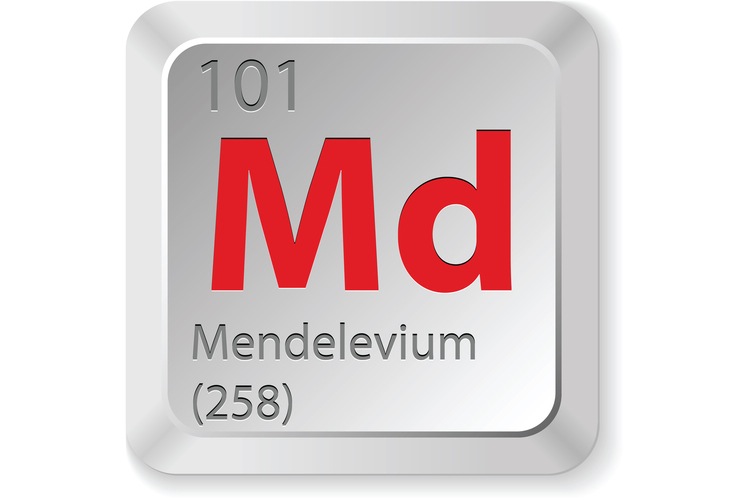Facts About Mendelevium

Atomic Number: 101 Atomic Symbol: Md Atomic Weight: 258 Melting Point: 1,521 F (827 C) Boiling Point: Unknown
Word Origin: Mendelevium is named after the Russian chemist Dmitri Mendeleev.
Discovery: In early 1955, Stanley Thompson, Glenn Seaborg, Bernard Harvey, Gregory Choppin and Albert Ghiorso at the University of California, Berkeley, bombarded Einsteinium-53 with helium ions in the Berkeley 60-inch cyclotron. It produced a new isotope, 256Md, which was notable for revealing the existence of mendelevium and also for being the first isotope synthesized on a one-atom-at-a-time basis.
It was the ninth transuranium element of the actinide series to be discovered.
Properties of mendelevium
Mendelevium is part of the actinide series. As is characteristic of actinide elements, mendelevium possesses a III oxidation state. Experiments indicate that it also possesses a moderately stable II oxidation state. [See Periodic Table of the Elements]
Mendelevium has 14 recognized isotopes. The most stable one is 258Md, which has a half-life of about 51.5 days.
Sources of mendelevium
Mendelevium is artificially produced, and it has never been made in great quantities.
Uses of mendelevium
Only small quantities of mendelevium have ever been produced, so it has no commercial uses. It is used only for scientific research. The isotope 256Md has been helpful in understanding some of the chemical properties of mendelevium in aqueous solution.
(Sources: Los Alamos National Laboratory, Jefferson Lab)
Sign up for the Live Science daily newsletter now
Get the world’s most fascinating discoveries delivered straight to your inbox.











